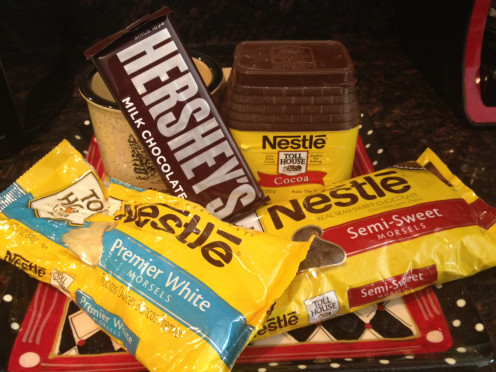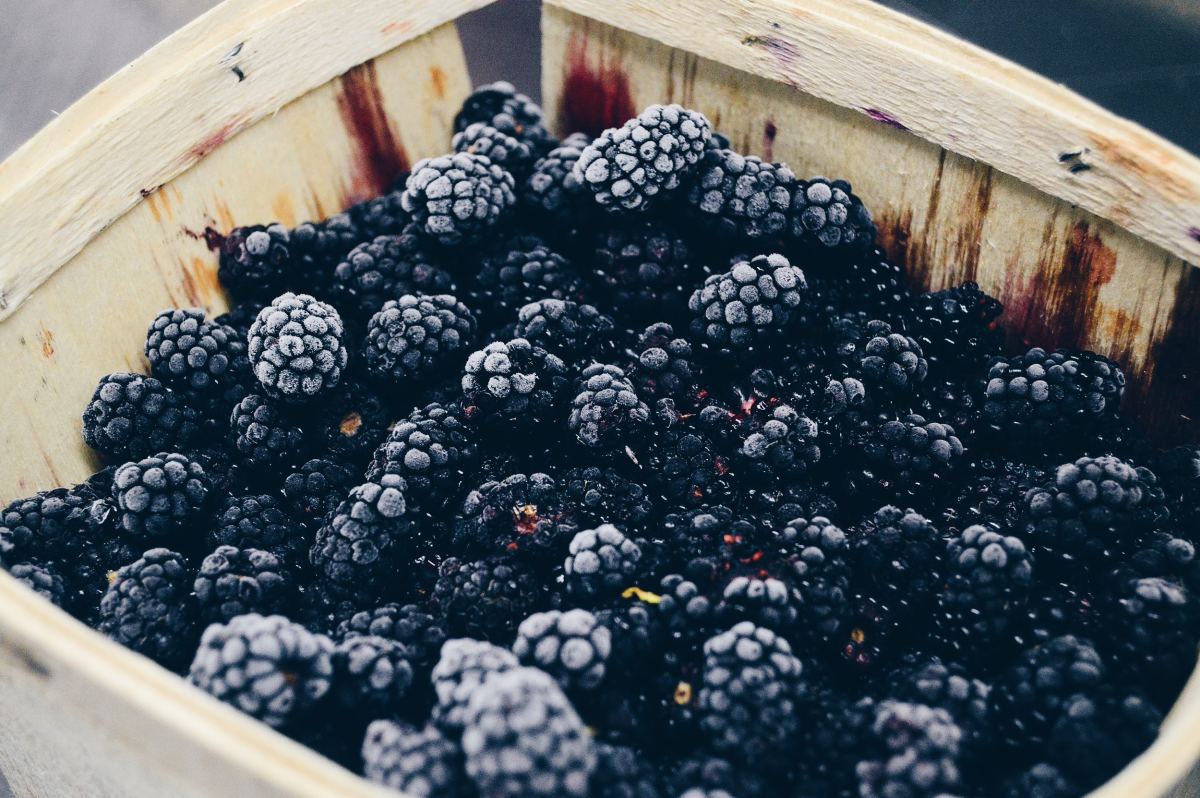Tips for Cooking and Baking with Chocolate

What is your favorite kind of chocolate?
Where does chocolate come from?
Chocolate is started with cocoa beans that are roasted then ground to a powder. Cocoa butter is added to the ground cocoa beans resulting in chocolate. Milk, sugar, butter, and vanilla can all be added to the mixture to give the chocolate different flavors and properties. Chocolate is assigned a "cacao percentage" which is the amount of cocoa beans/cocoa butter in the product. The higher the percentage, the more rich and bitter the flavor.
How to Melt Chocolate
Microwave Method
- Place your chocolate squares or chips in a microwave wave safe bowl. Place in the microwave and cook for 1 minute on high power. Stir the mixture with a dry spoon. If it is smooth, remove the bowl. If not, continue to cook in 10 to 20 second intervals.
Stove Top or Double Boiler Method
- Place your chocolate chips or squares in a small sauce pan. Fill a second sauce pan with enough water to the smaller pan to soak in. Place the larger pot over medium heat allowing the water to warm the small pan with the chocolate. Stir until smooth.
"Oh no I ruined it!" - Tips for Saving Seized Chocolate
Chocolate that is burned to clumped is called "seized chocolate". It is commonly done by scorching the sugars in the chocolate or by adding something like water, milk, butter, or spreads to the melted mixture. If this has happened to your chocolate, here's how to save it:
Type of Chocolate
| Oil or Shortening
| Amount
|
|---|---|---|
Milk Chocolate
| Vegetable or Canola Oil
| 1 tbsp
|
Semisweet
| Shortening, Vegetable or Canola Oil
| 1 tbsp
|
Dark Chocolate
| Shortening, Vegetable or Canola Oil
| 2 tbsp
|
White chocolate
| Shortening, Vegetable or Canola Oil
| 1 tbsp
|
Types of Chocolate, from sweet to unsweet:
White Chocolate
- White chocolate has no cocoa beans, but is made from cocoa butter, milk, and sugar. It has a creamy white color and smooth texture. It is used in many of the same ways as milk chocolate. It is popular for candies, cookies, dips, and decorating.
- How to Make Swirled White Chocolate Raspberry Cheesecake
Milk Chocolate
- Milk chocolate is made from cocoa solids, cocoa butter, and milk. It is commonly found in candy bars, and it is available in chip form. The creamy texture and sweet flavor make it popular among kids as well as adults. Milk chocolate is easy to melt, so it is great in cookies, cakes, and bars. Milk chocolate chips can be melted along with shortening or parafin to make it perfect for dipping fruits, nuts, or popcorn.
- Christmas Candy: Peppermint Chocolate Fudge
German Chocolate
- German chocolate isn't sweet or unsweet, but very much in the middle between milk chocolate and semisweet chocolate. It is perfect for cakes, cookies, or brownies where a subtle flavor is expected. It is typically has a cacao percentage of 45-50%
- How to Make German Chocolate Pound Cake
Semi-sweet Chocolate
- Semi-sweet chocolate is roughly 50-60% cocoa solids and has a mild sweet flavor. It is commonly used in bakng recipes, most famous in chocolate chip cookie recipes. It has a very smooth chocolate flavor making it the perfect choice for the majority of baking recipes.
Bittersweet Chocolate
- Bittersweet chocolate is not very tasty to be eaten by itself, but add sugar, milk, butter, or other ingredients to make this strong, rich chocolate delicious. It is commonly used in truffle or candy recipes or in certain cookies or cakes. Some would even classify the flavor as "European". Bittersweet chocolate typically has a cacao percentage of 60-70%.
Unsweetened Chocolate
- Unsweetened chocolate has no added sugars or flavors. It is typically all cocoa solids, giving it a cacao percentage of 100. It is extremely bitter, but makes for a great base for cookie, cake and brownie recipes where other ingredients will sweeten the mixture.
How to Store Chocolate
Chocolate should be kept around 70 degrees, so in a cupboard, pantry, or cabinet is ideal. Chocolate should not be kept in a refridgerator or freezer for a long period of time due to the low temps and the moisture. It should be kept in an airtight container to prevent other smells and flavors from penetrating the packaging and tainting the flavor.








